Lee Hyo-seok Culture Village (이효석문화마을)
12.1Km 2022-12-29
Wongil-ri, Pyeongchang-gun, Gangwon-do
+82-33-335-9669
Lee Hyo-seok Culture Village is the place where the author Lee Hyo-seok (pen name “Gasan”) was born and raised. The village is also the setting of the author’s novel "When the Buckwheat Blossoms,” one of the most celebrated Korean short stories to date.
In 1990, the village place was designated ‘first national cultural village’ by the Ministry of Culture and Tourism. The village is comprised of the author's birth house, a water mill, Gasan Park, Lee Hyo-seok Memorial Hall, and a buckwheat museum. During the peak of the blossoming season in early fall, the annual Lee Hyo-seok Cultural Festival takes place and visitors can enjoy the beautiful scenery of snow-white fields of buckwheat flowers.
Lee Hyo-seok Cultural Festival commemorates the modern Korean writer and features buckwheat-themed programs. Events include a Hyo-seok essay contest, traditional performances, a costume parade, a photo contest, and "When the Buckwheat Blossoms" plays and related performances. During the festival, visitors can enjoy makguksu (buckwheat noodles) and memil buchim (buckwheat pancakes) and tour the locations that appear in the famous short story.
Heungjeonggyegok Valley (흥정계곡)
12.1Km 2024-02-13
62 Heungjeonggyegok-gil, Bongpyeong-myeon, Pyeongchang-gun, Gangwon-do
+82-33-330-2771
Heungjeonggyegok Valley is about 5 kilometers away from the town of Bongpyeong-myeon in Pyeongchang, Gangwon State. The 5-kilometer long valley that stands between Heungjeongsan Mountain and Hoeryeongbong Peak has a beautiful landscape. A wide variety of freshwater fish like trout inhabit the clear waters of the valley. Heungjonggyegok Valley has become a famous attraction in the Bongpyeong area along with Bongsan Seojae, shrine of the prominent neo-Confucian scholar Yulgok (1536-1584), and Palseokjeong, featuring the writings of Yang Sa-eon.
Lee Hyo-seok Memorial Hall (이효석 문학관)
12.4Km 2021-08-11
73-25, Hyoseongmunhak-gil, Pyeongchang-gun, Gangwon-do
+82-33-330-2700
Lee Hyo-seok Memorial Hall was opened on September 7, 2002 during the Hyoseok Cultural Festival to celebrate the literary contributions and display artifacts from the life of Lee Hyoseok (pen name Gasan). Many of the artifacts on display came from the Gasan Literature Group but some items were also donated from the children of Lee Hyoseok to commemorate the passing of their father.
Hyoseok Literature Baengnigil Trail Course (효석문학 100리길)
12.7Km 2023-06-23
14, Aegangnamu-gil, Pyeongchang-gun, Gangwon-do
Picturesque Pyeongchang, is a place where beautiful nature unfolds.
Pyeongchang, which retains its beautiful nature with four distinct seasons, is a place where the vast natural scenery spreads out like a panorama and is often called the "Asian Alps." About 65% of the total area of Pyeongchang is located in the highlands above 700 meters above sea level, and it is a clean natural area making it the best getaway destination.
Gajae Wa Gom Pension [Korea Quality] / 가재와곰펜션 [한국관광 품질인증]
12.9Km 2023-12-22
212-27 , Heungjeonggyegok 4-gil, Pyeongchang-gun, Gangwon-do
+82-33-336-3357
Gajae-Wa-Gom is a log-built pension in the upper Heungjeong Valley in Pyeongchang-gun, Gangwon-do. The guestrooms are cozy cabins, either red-clayed single-storey, or two-sotrey cabins. Gajae-dong and Wa-dong have an ondol 1st floor with a bedroom upstairs, while Gom-dong has a 1st floor bed room with an attic above. The red-clayed cabin, Hwangto, has a furnace-fired ondol. All rooms have terraces where guests can enjoy barbecue meals.There are karaoke rooms and foot volleyball courts outside, and free coffee and tea are provided in the lounge.
Pyeongchang Trout Festival (평창송어축제)
12.9Km 2023-12-28
3562 Gyeonggang-ro, Pyeongchang-gun, Gangwon-do
+82-33-336-4000
The Pyeongchang Trout Festival takes place during winter in Pyeongchang, 700 meters above sea level. Visitors to the festival can enjoy a variety of programs including ice and lure fishing for trout, snow programs, ice programs, folk programs, and more. Any trout caught from ice fishing and lure fishing can be prepared right away in different dishes at a nearby restaurant.
Memilkkotpilmuryeop (메밀꽃필무렵)
13.0Km 2024-02-16
33-11 Ihyoseok-gil, Bongpyeong-myeon, Pyeongchang-gun, Gangwon-do
033-335-4594
Memilkkotpilmuryeop is a Gangwon local food restaurant renowned for its buckwheat delicacies. One of their standout dishes is the ganjang namul memil guksu (buckwheat noodles with soy sauce salad), a refreshing noodles featuring a subtly flavored soy sauce-infused broth. The restaurant places a strong emphasis on using buckwheat grown in-house and organic vegetables to enhace the taste of their offerings. Additionally, their memil jeonbyeong (buckwheat crepe) stuffed with minced kimchi and vegetables, and gamja mandu (potato mandu), are also must-try specialties.
Birthplace of Lee Hyo-seok (이효석 생가)
13.1Km 2020-11-20
33-11, Ihyoseok-gil, Pyeongchang-gun, Gangwon-do
+82-33-330-2771
Lee Hyo-seok Culture Village is the setting of the beautiful Korean story “When Buckwheat Flowers Bloom,” and also home to the author, Lee Hyo-seok (pen name Gasan). Registered as National Culture Village No. 1 in 1990 by the Ministry of Culture and Tourism, the village is the setting of the annual Hyoseok Cultural Festival in autumn. The village is made up of the birthplace of Lee Hyo-seok, a watermill house, thatch-roofed housing, Gasan Park, Lee Hyo-seok Memorial Hall, and restaurants serving food made with buckwheat.
Pyeongchang Mooee Arts Center (평창무이예술관)
13.3Km 2023-06-28
233, Saripyeong-gil, Pyeongchang-gun, Gangwon-do
+82-33-335-4118
The former Mooee Elementary School was transformed into Mooee Arts Center exhibiting works of noted Korean artists. It is located in the town of Bongpyeong-myeon in Pyeongchang-gun, which was the hometown of the famous Korean writer Lee Hyo-seok (1907-1942) and the background setting of his representative novel "When Buckwheat Flowers Bloom." Mooee Arts Center opened on April 18, 2001, after 2 years of preparation by Korean artists of various genres including the Western-style painter Jeong Yeon-seo, calligrapher Lee Cheon-seop, sculptor Oh Sang-wook, and potter Kwon Soon-beom.
The schoolyard has been turned into an outdoor sculpture park displaying large-scale sculptures. The arts center also offers hands-on experience programs and a chance to view the artists creating their pieces.
Odaesan Seonjaegil Trail (오대산 선재길)
13.4Km 2023-06-23
374-8 , Odaesan-ro, Pyeongchang-gun, Gangwon-do
+82-33-332-6417
Seonjaegil Trail, a course famous for its beautiful foliage along the valley in autumn, is a 9-kilometer forest road from Woljeongsa Temple to Sangwonsa Temple. It is a path that monks and Buddhists used to walk. Travelers can meet the culture of the past through the traces of old people while strolling along the trail, and see various animals and plants as they pass through the forest tunnel that embraces Odaecheon Stream. This course is recommended for couples who want to enjoy a date, the elderly, and families traveling with children.
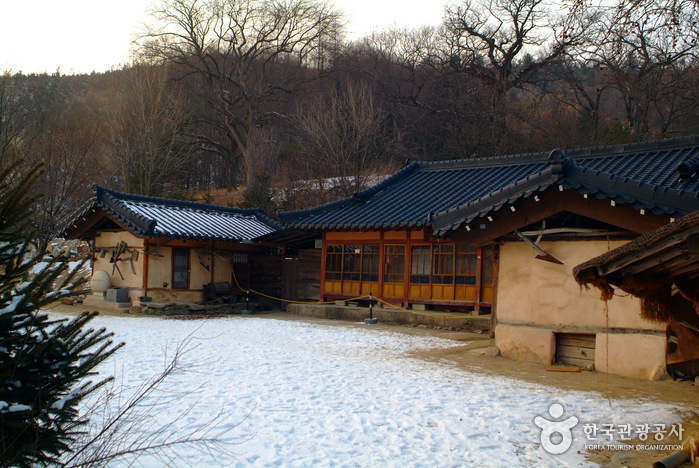
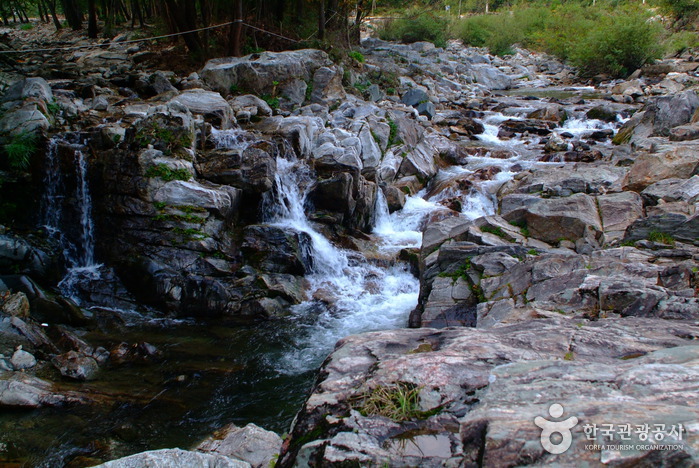
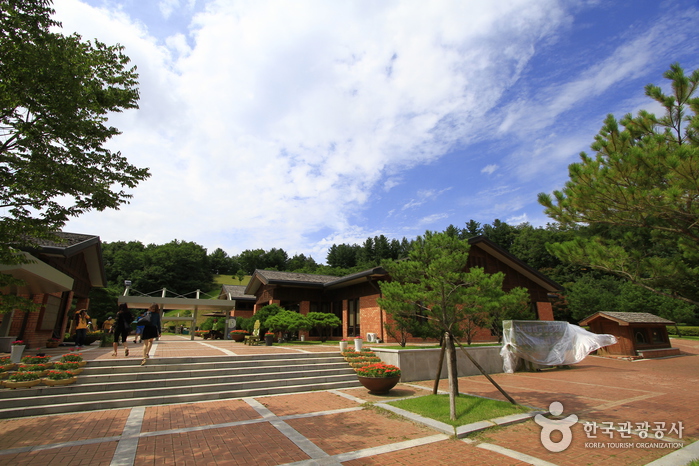
![Gajae Wa Gom Pension [Korea Quality] / 가재와곰펜션 [한국관광 품질인증]](http://tong.visitkorea.or.kr/cms/resource/06/2707806_image2_1.jpg)
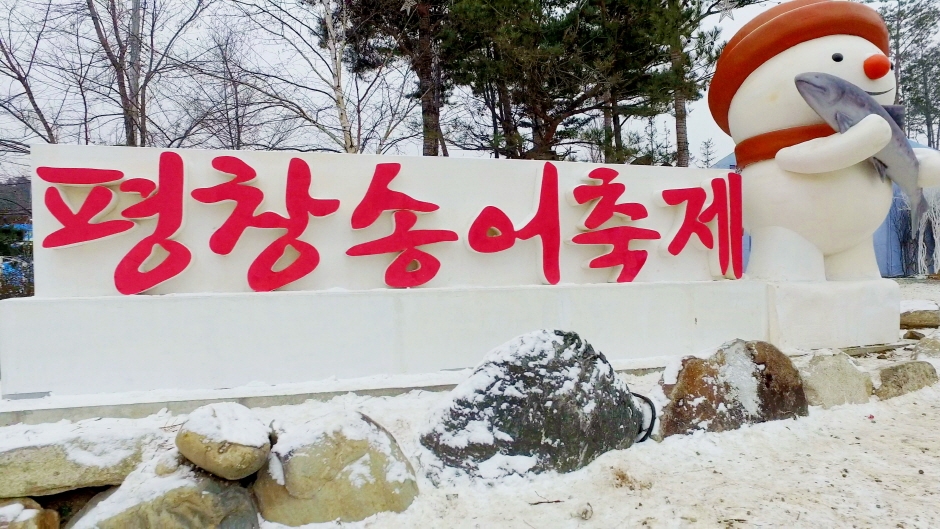
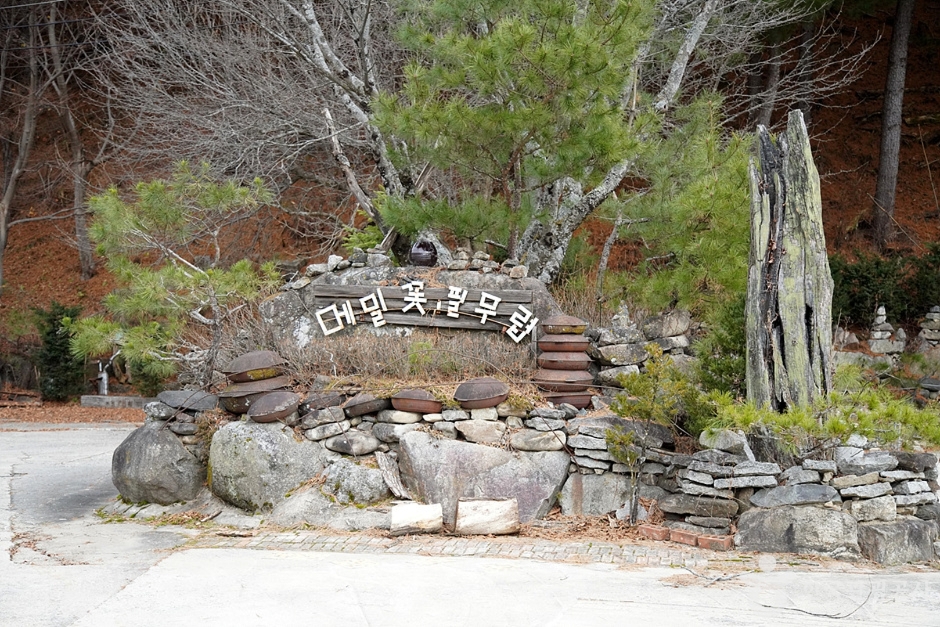
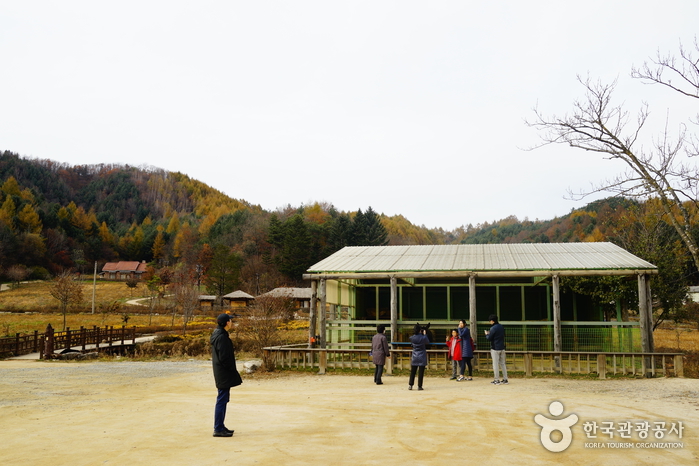
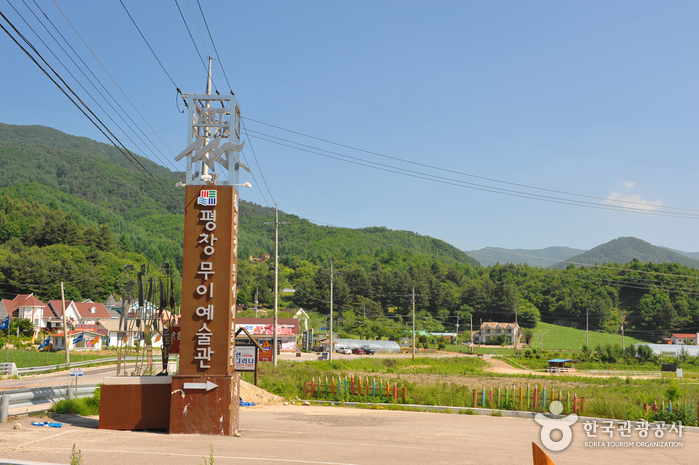

 English
English
 한국어
한국어 日本語
日本語 中文(简体)
中文(简体) Deutsch
Deutsch Français
Français Español
Español Русский
Русский